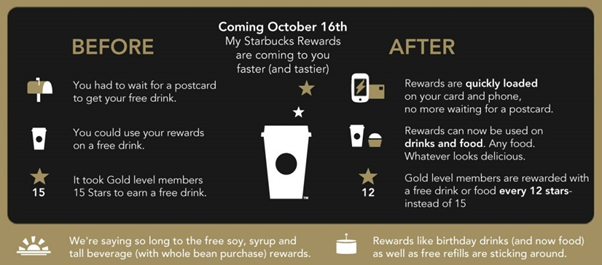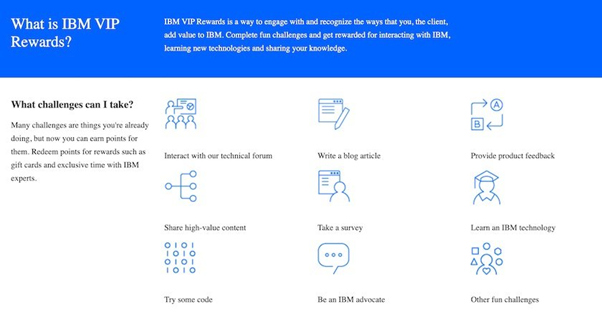So, turns out you don't have to run your loyalty programmes like the mafia. Although, I tend to choose my coffee shops based on who threatens me and my family more, but those are my own issues.

Though loyalty programmes aren't the shiniest, slickest approach to customer retention and attraction, they are one of the most common. In fact, more than 90% of companies have some version of customer reward.
The thing is reward programmes aren't just common, they're also highly effective, especially when it comes to increasing revenue, and inspiring customer loyalty. I mean, it's in the name.
84% of customers actually say they're more likely to stick with a brand that offers one, and 66% of consumers say the ability to earn rewards actually changes their spending behaviour.
So, we know it costs a lot less to retain customers than acquire new ones, meaning that tactics like loyalty programmes are worth investing in.
Why do Loyalty Programmes Work?
Well, it's pretty simple really. Loyalty programmes offer value to your customers. And if they see value, they'll stick around.
Your customers need to be motivated to spend, and also to participate in a programme, so picking loyalty schemes that fit with your target audience is key. Figure out their regular purchasing habits, or their most popular items, can really encourage people to participate.
Loyalty programmes don't just work on an immediate level either, they also build the image of your brand. You can tie the reward back to your company, injecting flair into every detail. All the elements of a loyalty programme can basically bring your customer back.
It encourages them to build an affiliation, or an identity, tied with your brand, or even some good old sunken cost theory - the more time someone invests in something, the less likely they'll move away from it, or quit, no matter what they're receiving in return.
It's all fun and games
The elements of gamification these programmes provide can also be highly impactful.
Gamification is aimed at rewarding, and therefore enforcing, specific behaviours and actions. Using fun, competition, and games has proved to be an effective tool for increasing engagement and interest across many areas.
Gamification is a particularly successful technique in customer loyalty, where progressing through levels and receiving rewards is the name of the, well, game. Companies that use gamification can see a 47% rise in engagement, with 27% of millennials saying they would stay in a loyalty initiative if it featured a game or a social aspect..
What technologies can be used for loyalty programmes?
Well, there's a few piece of tech that can up your loyalty programme, outside of the coffee stamp, including:
- Mobile Wallets. This is where customers can store whole reward programmes, discounts, coupons, loyalty cards, and travel tickets. All these rewards and 'points' can be easily accessed and viewed by your customers, and can be integrated into their daily lives and routines.
- Apps. Mobile tech is essential for good customer experience in the modern world. People expect the ability to have your products, and rewards, available at their fingertips at all times. An app can act as a hub for offers, gifts, rewards and event announcements all in one place.
- Machine Learning and AI. Okay, now we're stepping it up. You can use AI to analyse how effective your programmes are, and to predict outcomes in order to create better campaigns. It can also personalise offers for customers, and customer demographics, making the rewards even more appealing.
Create Creativity
If you want your loyalty programme to stand out, you need to get creative. This might be examples like:
- Focus your programme around a specific product, and include its name or slogan. Extra points if it's a product or service your clients are particularly excited about.
- Name the points within the programme in an interesting way, and a brand relevant way.
- Introduce new ways for customers to earn points and rewards, and keep it interesting. McDonald's might use their normal point system, but we know how mad people go for Monopoly.
- Design loyalty programmes to be easy to use, and intuitive.
So, let's have a look at some companies doing it right, starting with:
1. My Starbucks Rewards
The Starbucks app was the first major loyalty/rewards programme that didn't focus on sign-ins or punch-cards.
Instead, when customers use the app to make a purchase, they receive 'stars' in return. This is how the coffee giant has centralised payments, and how it gathers customer data.

The reward programme has 16M active members, with 11% growth of their customer base in one quarter alone. Starbucks actually attributes 40% of its total sales to the programme, and has seen same store sales rise by 7%.
Since its introduction, the programme has seen impressive membership and growth, with multiple improvements and iterations being introduced. It has reinvented the customer's relationship with the store, through a number of benefits, including:
- Ease of payment
- Ability to order and pay before arriving in the store, avoiding lines
- Rewards and benefits including free refills and birthday treats
- Special member events
- Ability to send and receive gift cards
- App integration with Spotify to discover music playing in store, extending the customer experience and brand identity beyond the app and beyond the product.
- Seasonal announcements.
Starbucks have also dipped their toes into gamification, with its Starbucks for Life and Bonus Star Bingo campaigns. These enabled loyalty members to accumulate points and prizes over a period of time. And it worked - it's membership reached 19.4M.
2. LEGO VIP
Lego has an avid fanbase, of all ages. They relaunched their loyalty programme with CrowdTest Loyalty and Engagement, in order to move away from their previous approaches of providing passive discounts for high spenders. Instead, they asked their members to actively engage by choosing their own rewards that connect with their passion points.
LEGO then were able to reward their members in a meaningful way, based in an inclusive approach. Recent rewards include:
- Segmented rewards, i.e. rewards only being available to certain customers
- One-of-a-kind rewards i.e. rewards that can't be found anywhere else
- Mobile wallets i.e. connecting the in-store and online experience
- Bonus point multipliers i.e. awarding members double or triple points for purchases of a specific product.
3. IBM VIP Rewards Programme
An example of a successful B2B loyalty programme is the IBM VIP rewards campaign, which used the gamification techniques mentioned above to encourage customer retention and interaction.

This programme allows IBM clients and partners to complete challenges like taking surveys, writing blogs, coding, providing product feedback, and more. The client then earns reward points, and can convert them into gift cards, time with IBM experts and other prizes.
The programme served two main goals - to show appreciation for customer activity, and to encourage members to expand their knowledge of the businesses. The campaign included:
- Challenge-based activities
- Redeemable points
- Leader boards based on number of points earned
Traditionally, loyalty programmes have been for the B2C community, but recently there has been increased interest from B2B due to the sizable benefits.
Bain & Company have shown that loyalty leaders in B2B grow at 4-8 percentage points above their market's annual growth.
But there needs to be a difference in approach from B2C to B2B. Instead, there has to be a focus on tiered incentives, access to strategic partners and industry related events.
Though, the need for personalisation is consistent across both groups. It is almost more vital for B2B customers to be retained, so businesses in this industry may be willing to spend more time and resources building a rewards programme that is attractive to specific clients, that could represent a lot in lifetime value and revenue.
Approaches could include:
- Membership. B2B rewards systems can often require clients to sign a contact or make a purchase. They are also more suited to the subscription-based model, but must offer big benefits in exchange.
- Tier and perks. As mentioned above, point collection and redemption/ earn & burn is less effective in B2B. So, as deals in this industry are often subscription or commitment-based, tiers and perks work better.
- Rewards. B2B rewards should be more focused on business enhancement for the client, or special experiences like consultancy, movies or prize draws
- Long-term benefits. Unlike B2C, B2B can't rely on seasonal products or holiday offers. Instead you should emphasise long-term benefits,
- Personalisation. With a smaller B2B base, it makes sense for rewards to be highly personalised. So, tailor to each client.
